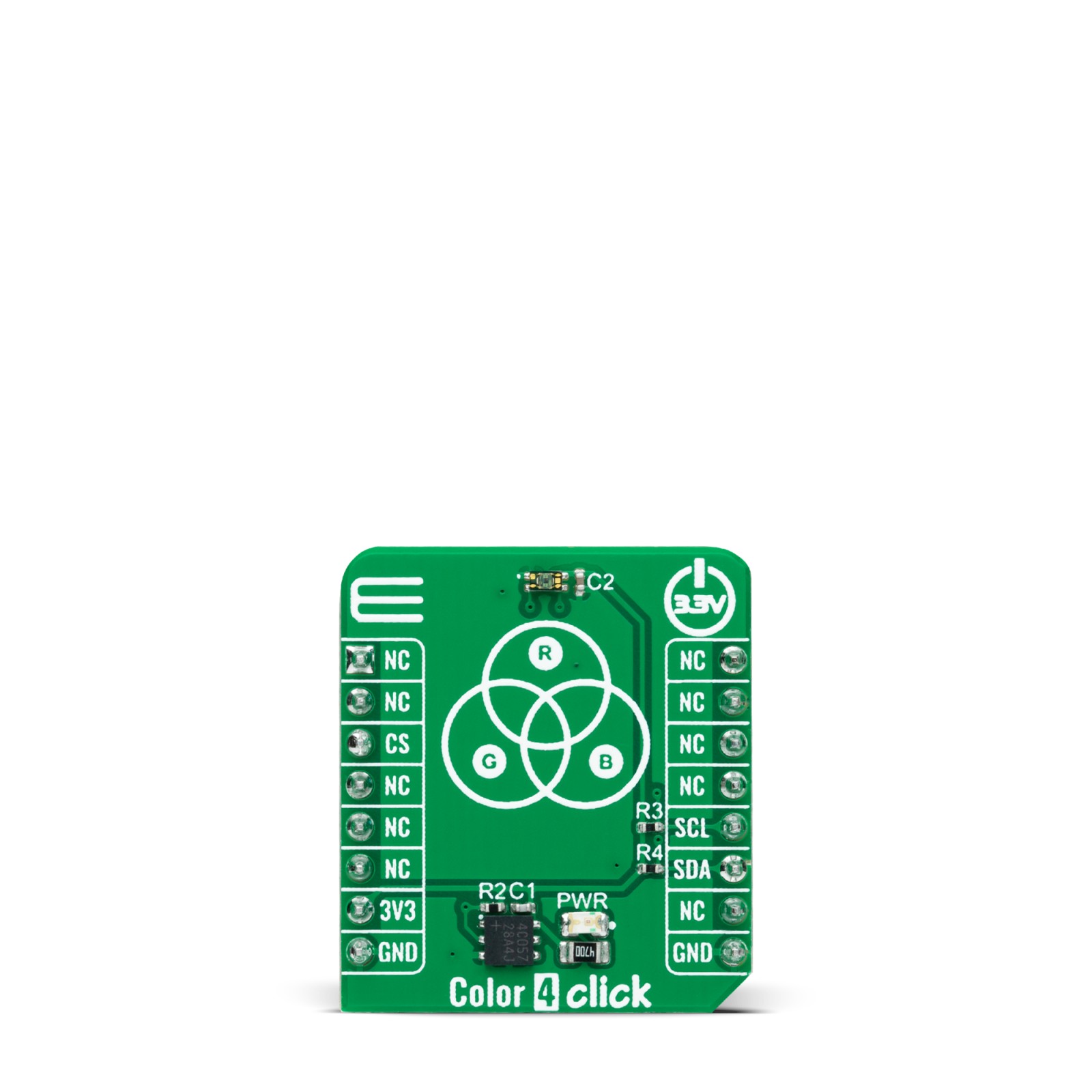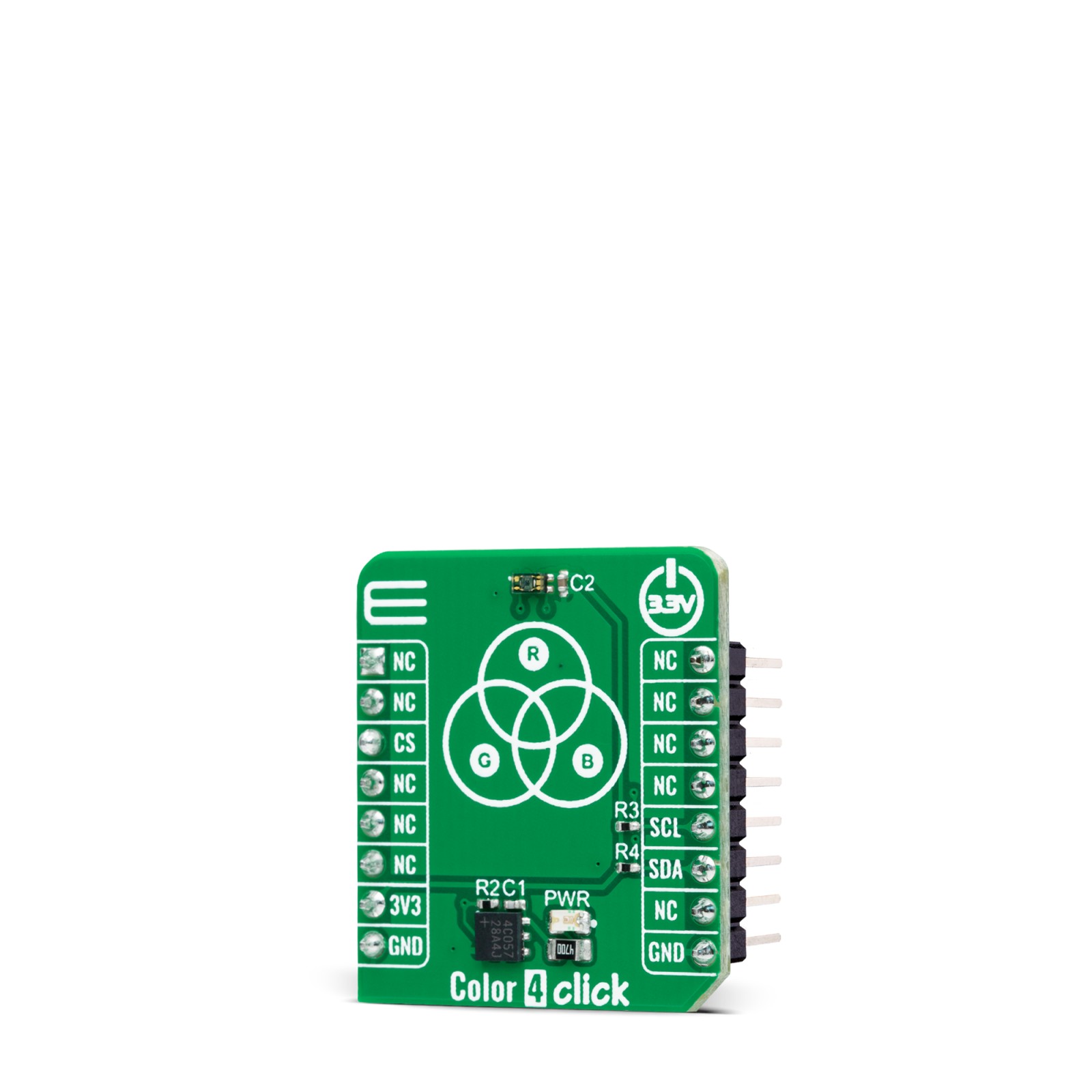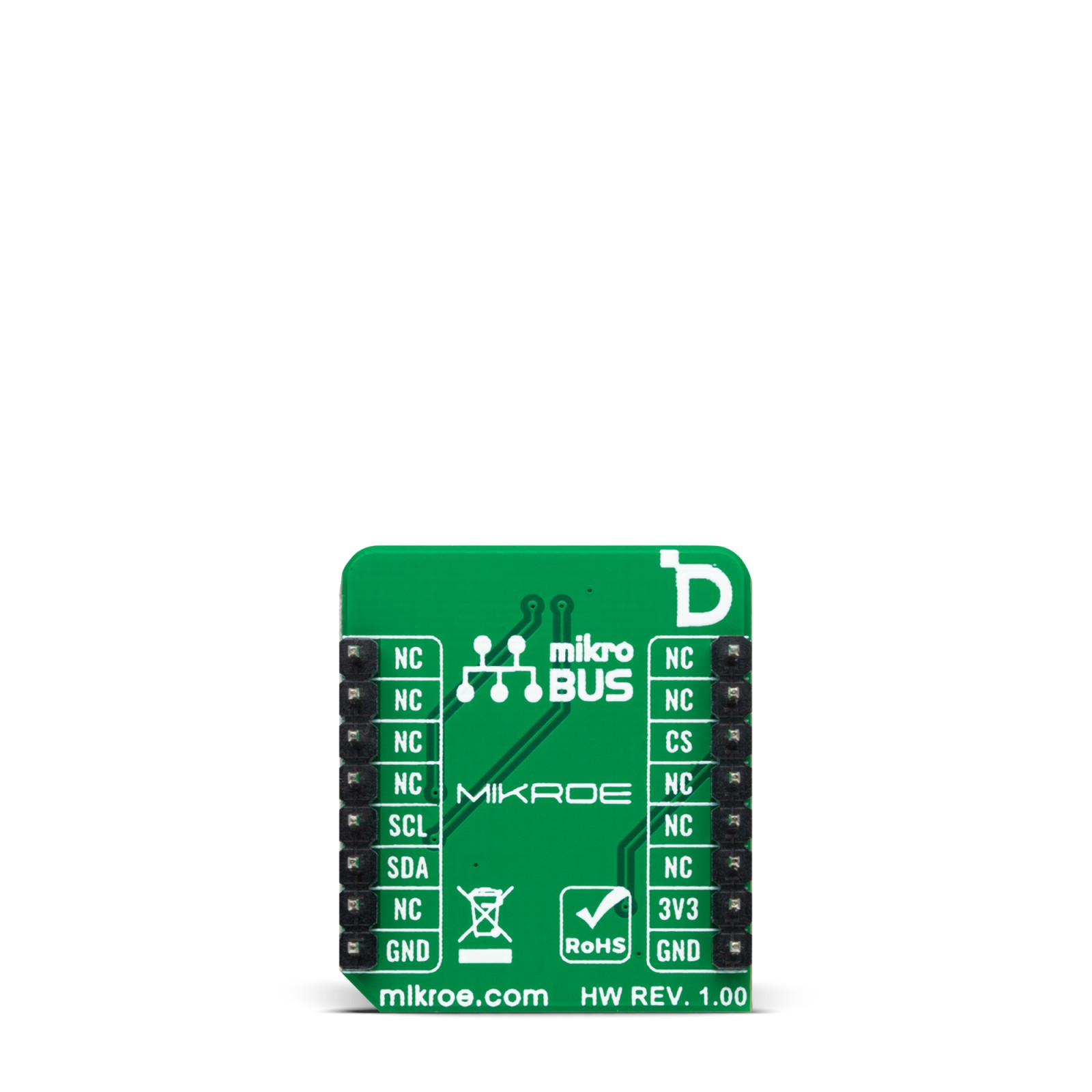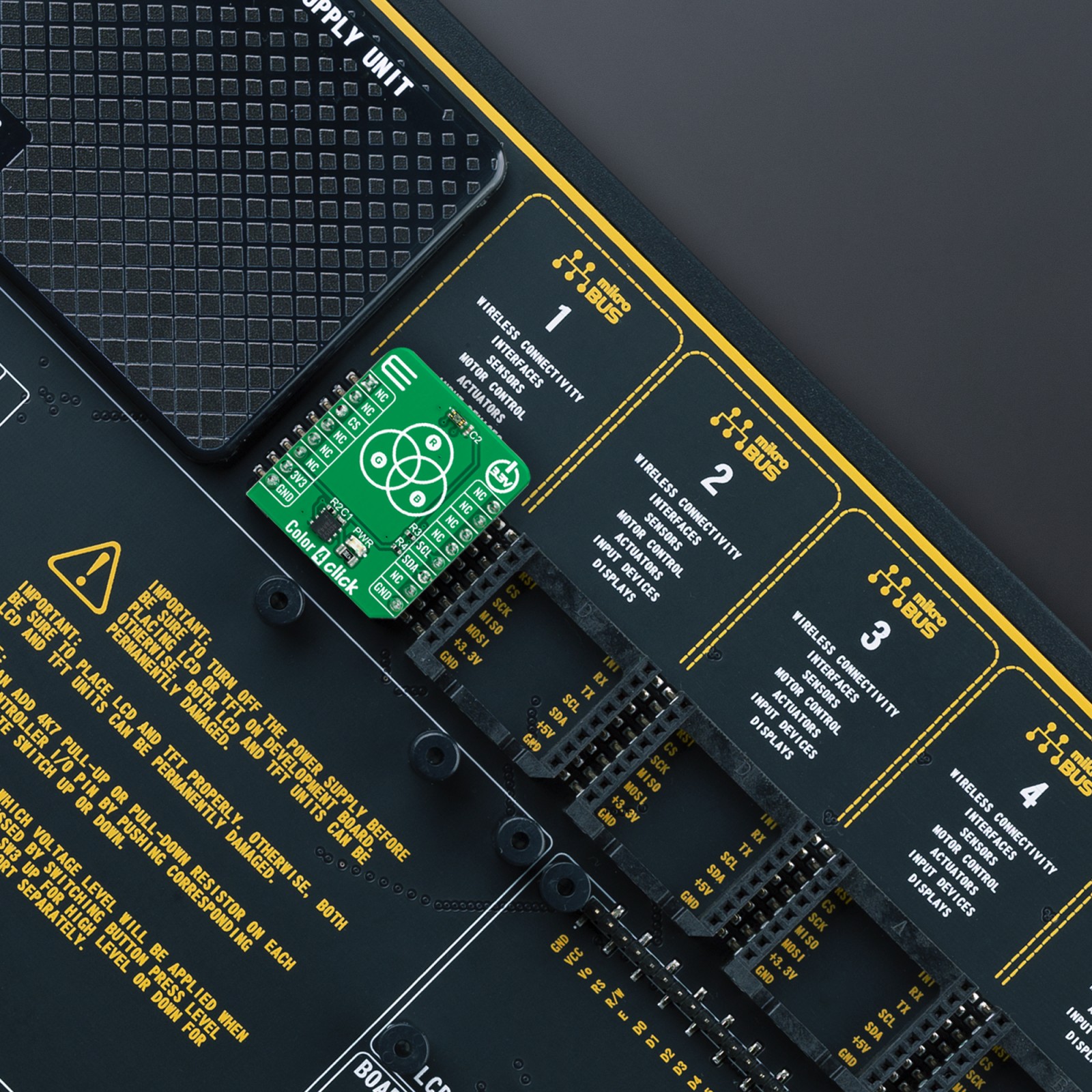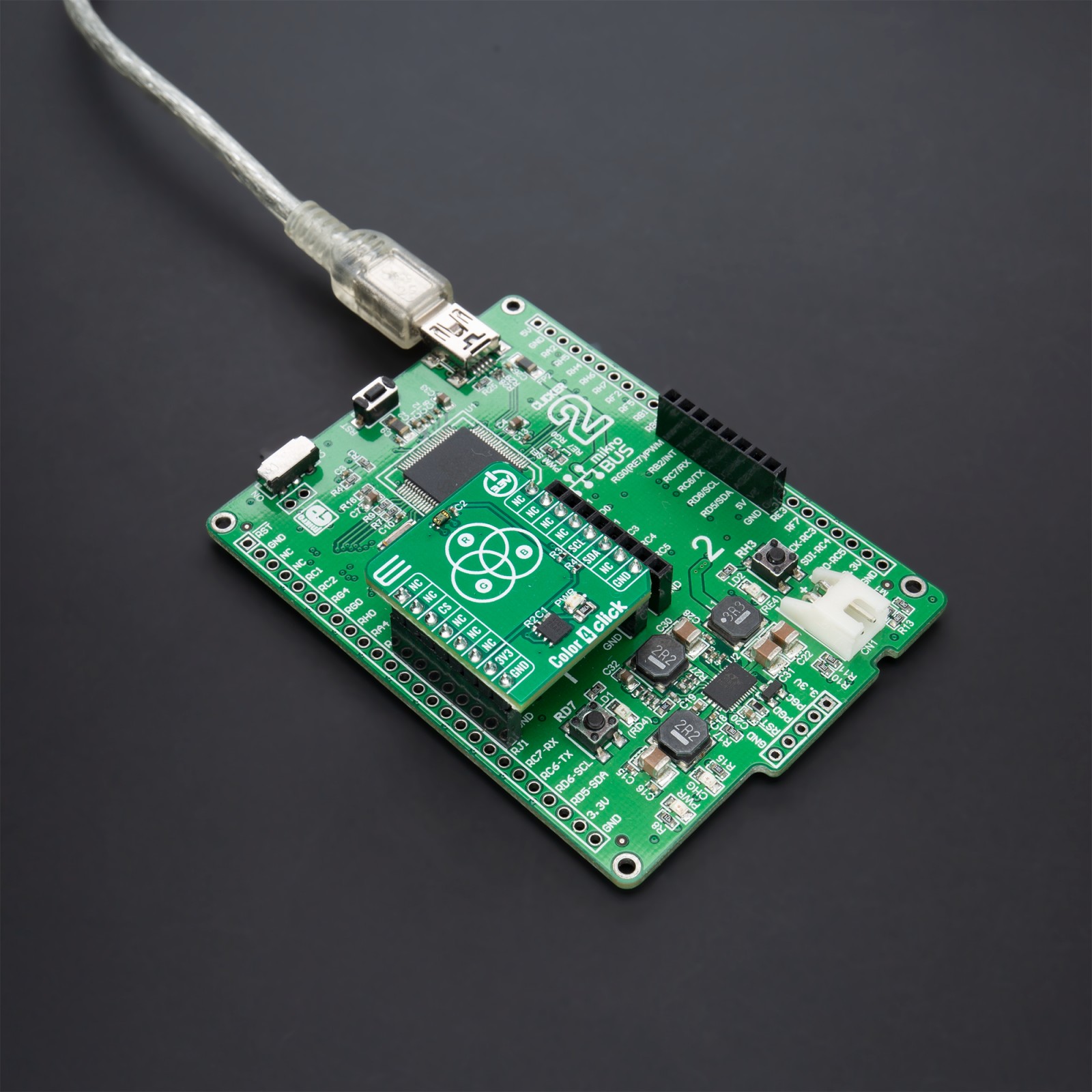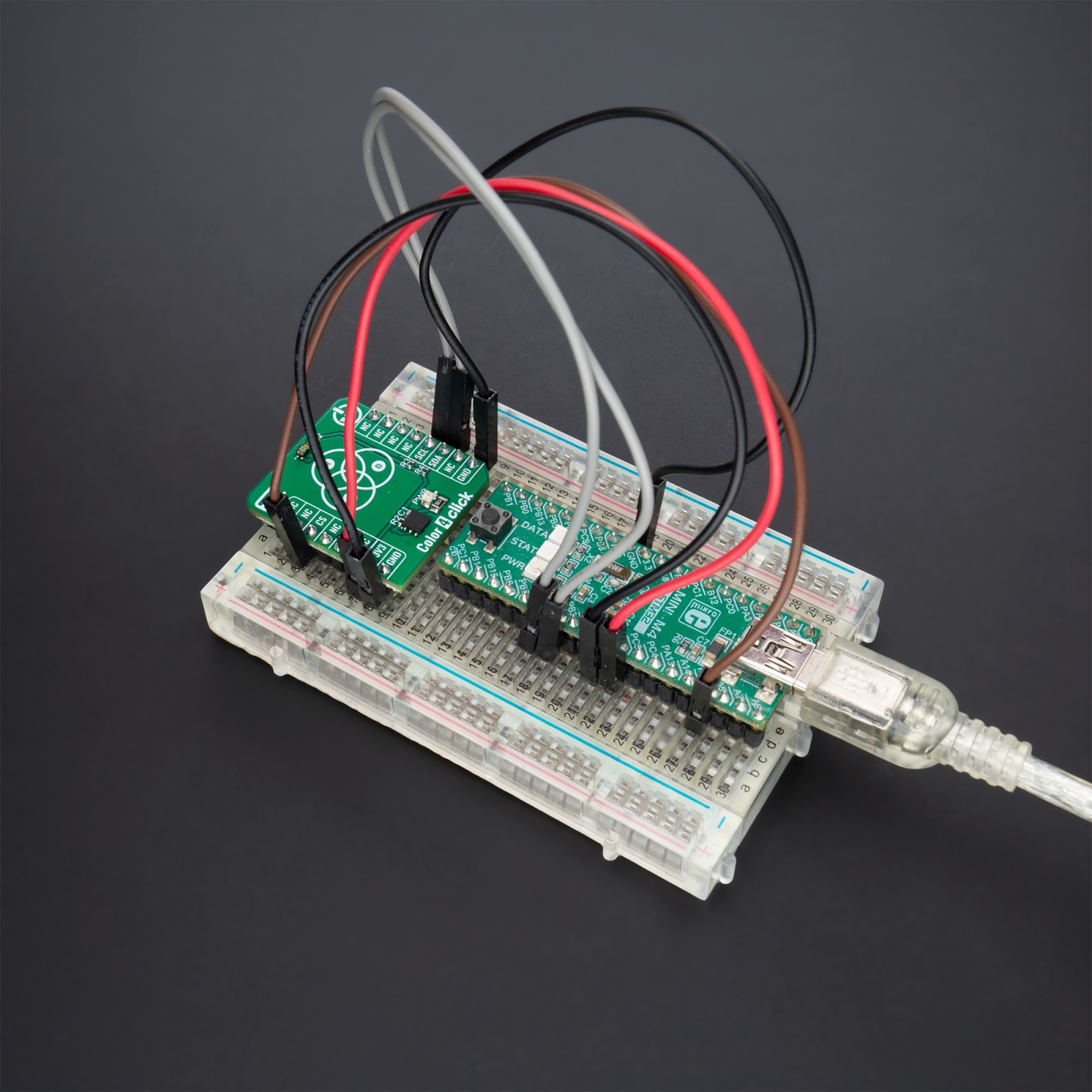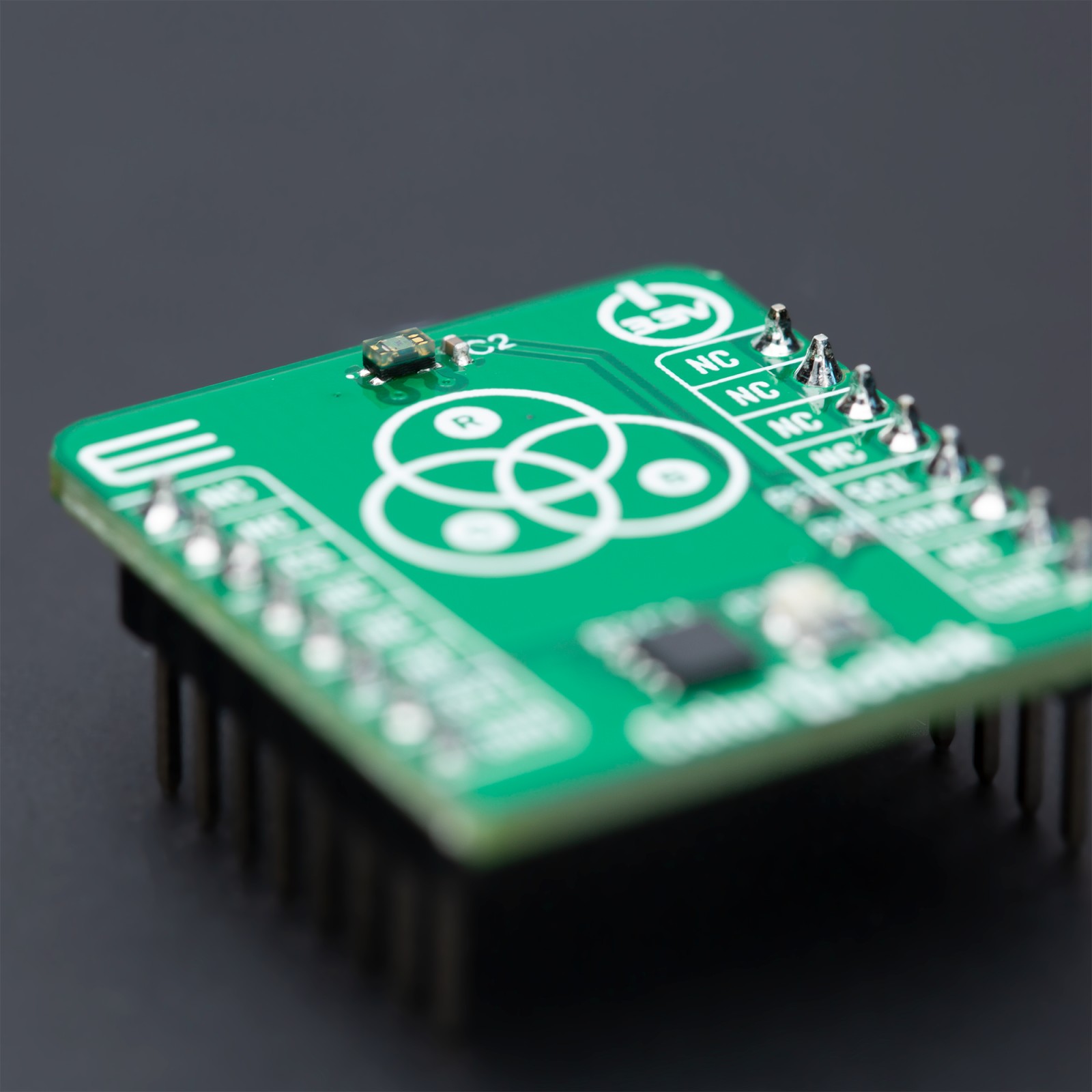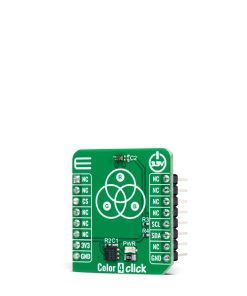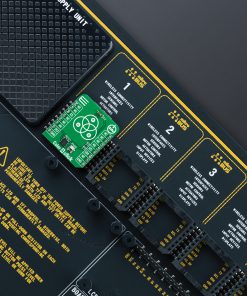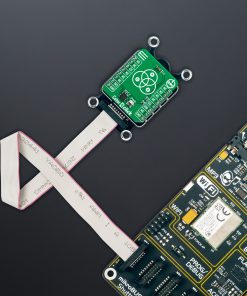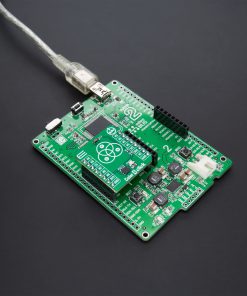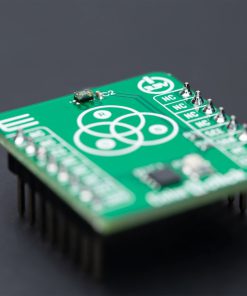Color 4 Click
R260.00 ex. VAT
Color 4 Click is a compact add-on board providing an accurate color-sensing solution. This board features the VEML6040 from Vishay Semiconductors, a 16-bit RGBW color sensor offering spectral response through a compatible I2C interface. The VEML6040 is based on the Filtron™ technology and achieves the closest ambient light spectral sensitivity to real-human eye responses. Alongside the color sensor, this IC also incorporates a signal conditioning circuit consisting of photodiodes, amplifiers, and A/D circuits placed into a single CMOS chip. It provides a selectable measurement range up to 16.496lx with the highest sensitivity of 0.007865lx/step. This Click board™ is suitable for color sensing with maximum flexibility in industrial, mechanical, and consumer applications.
Color 4 Click is fully compatible with the mikroBUS™ socket and can be used on any host system supporting the mikroBUS™ standard. It comes with the mikroSDK open-source libraries, offering unparalleled flexibility for evaluation and customization. What sets this Click board™ apart is the groundbreaking ClickID feature, enabling your host system to seamlessly and automatically detect and identify this add-on board.
Stock: Lead-time applicable.
| 5+ | R247.00 |
| 10+ | R234.00 |
| 15+ | R221.00 |
| 20+ | R212.68 |

